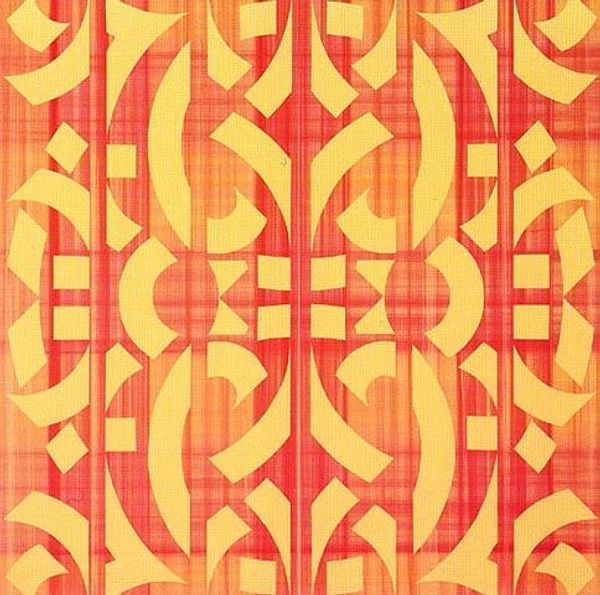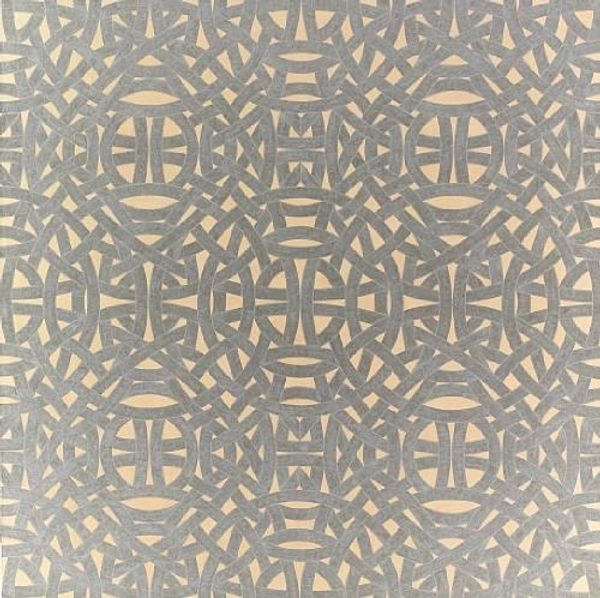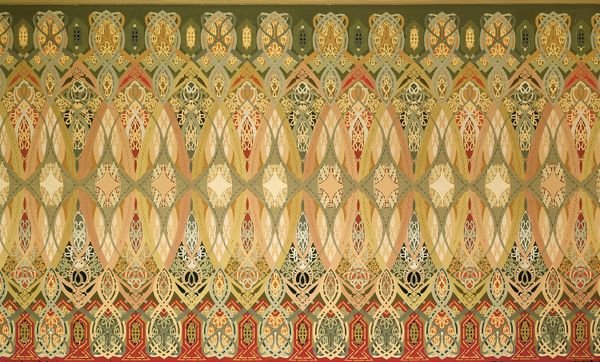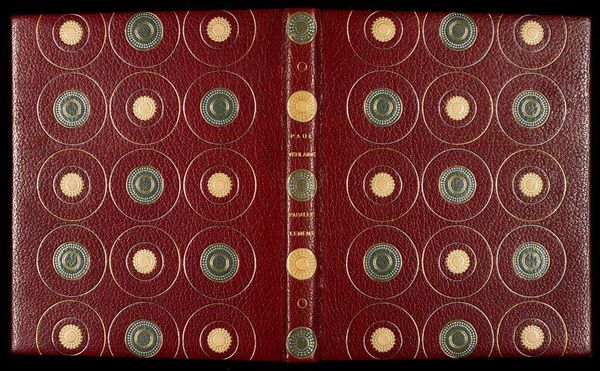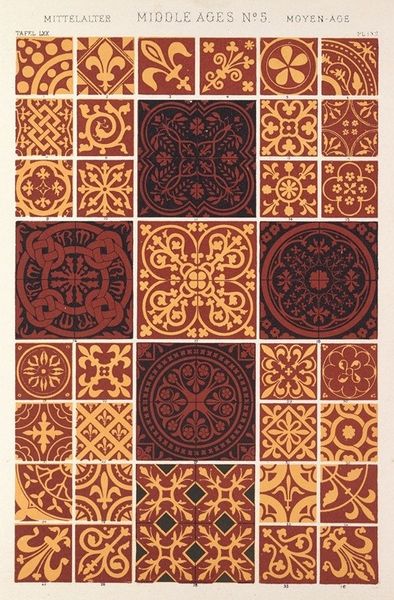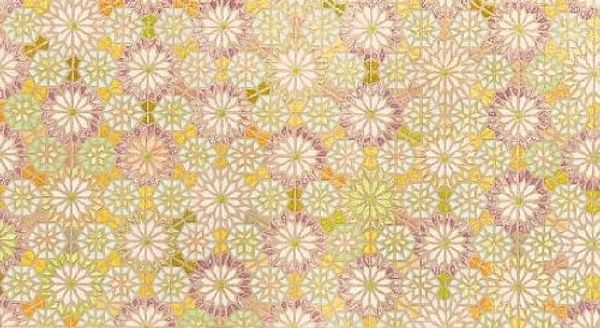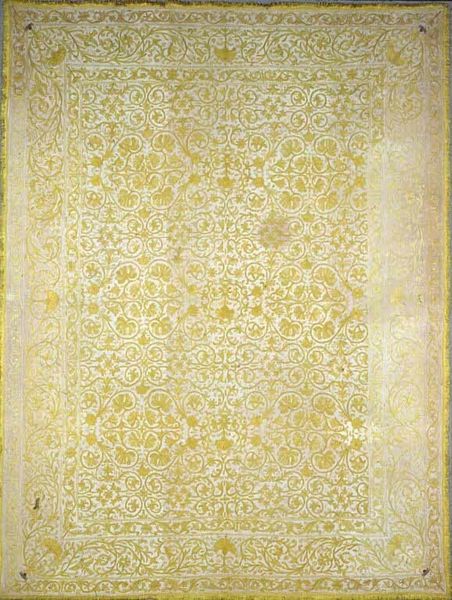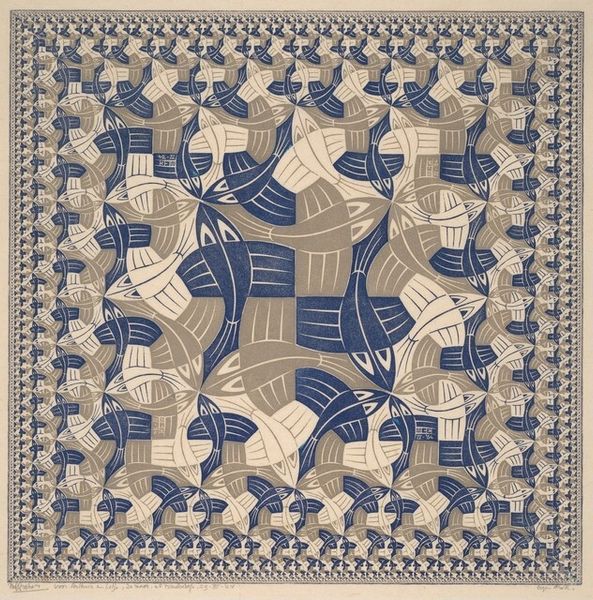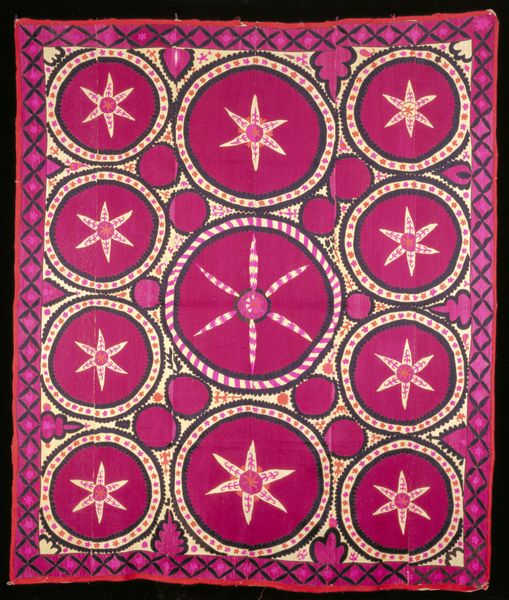
stencil
#
organic
#
art-nouveau
#
stencil
#
geometric pattern
#
organic pattern
#
geometric
#
decorative-art
Dimensions: 16-1/8 x 92-1/8 in. (41.0 x 234.0 cm)
Copyright: Public Domain
Curator: Ah, another glimpse into the past. What strikes you first about this pattern? Editor: That it feels like peering into a gilded-age fever dream. Ornate but subdued. It reminds me of wall coverings from grand but forgotten hotel lobbies. Curator: Precisely. This is a stencil by Louis Henri Sullivan, around 1893. Sullivan was all about architectural ornament, often stenciled. I can’t help but see echoes of seeds scattered across fertile ground, a silent symphony of nature's patterns. Editor: As an artifact, I’m drawn to consider the laborious stencil process behind this—the physical work in cutting and repeating patterns like this would've taken skill and many hands, speaking to the social context and craft element integral to making such art, especially at that time. How the architectural trend employed those many makers. Curator: The meticulousness involved indeed suggests that hand-crafted elegance and painstaking labor which seems rather a contrast from today's disposable decor. I also enjoy how it blends geometric structures with flowing, almost organic details, typical of Art Nouveau. It feels incredibly unified, complete, even...whole. Editor: The Art Nouveau touch with a more organic line lends movement, even within this repetition, doesn’t it? I wonder, though, about the actual social function of works such as this; did these elevate craftsmanship, or exploit it? And given that Sullivan used such patterns as embellishments for large structures, could he truly be considered to blur those boundaries between labor, class and fine art? Curator: Good points. Perhaps both occurred? One aspect that still resonates is its embrace of the idea that beauty should be woven into the everyday environment. That everyone has access to it. Editor: And also the consumption cycle that supported the aesthetic of the well-off. It really invites me to imagine it at the very beginning. To ask how did it make the hands feel, how many days was needed, where did the materials come from... Curator: I like how these historical patterns serve to anchor design elements throughout time and allow viewers access to feelings otherwise out of reach. Editor: Absolutely. To witness art, we mustn’t ignore the artistic laborers without whom aesthetic design could not exist!
Comments
minneapolisinstituteofart almost 2 years ago
⋮
The Chicago Stock Exchange Building, for which this stencil was made, was one of Adler and Sullivan's last commissions before the firm dissolved in 1895. Sullivan's repeating organic design motifs were well suited to the technique of stenciling, which was often used to decorate 19th century interiors. Sullivan continued to employ stencils throughout his career, including the interior of the National Farmer's Bank in Owatonna, MN (1907-08). The intertwining circle and oval motif seen in this panel was repeated throughout the Stock Exchange Building, creating a sense of harmony throughout the whole. This stencil design is very similar to the panel design above the elevator grilles in this gallery, also from the Stock Exchange Building. The Stock Exchange Building was demolished in 1972.
Join the conversation
Join millions of artists and users on Artera today and experience the ultimate creative platform.
